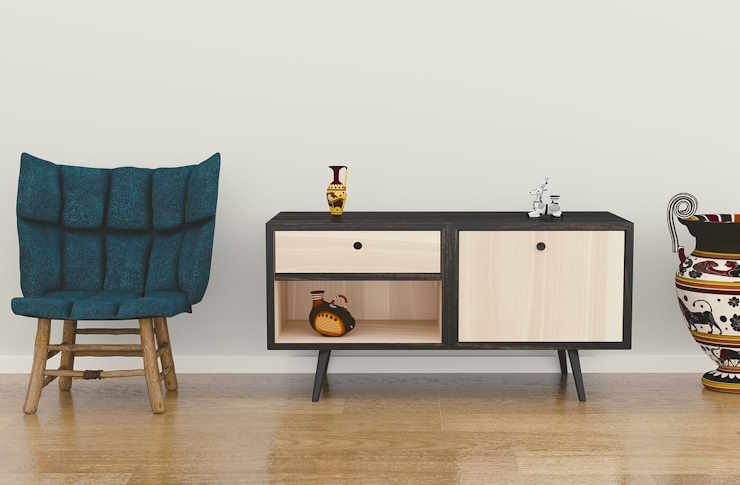Embracing Wabi-Sabi: The Art of Imperfect Beauty in Home Design
In a world obsessed with perfection, a quiet revolution is taking place in home design. Wabi-sabi, an ancient Japanese philosophy that celebrates the beauty of imperfection, is making its way into modern interiors. This approach to aesthetics and living encourages us to find beauty in the flawed, the aged, and the incomplete. As we navigate an increasingly chaotic world, the principles of wabi-sabi offer a refreshing perspective on creating spaces that are both grounding and deeply personal.

Origins and Philosophy of Wabi-Sabi
Wabi-sabi has its roots in 16th century Japanese tea ceremonies, where simplicity and rustic elegance were prized over ostentatious displays of wealth. The term wabi originally referred to the loneliness of living in nature, while sabi meant withered or lean. Over time, these concepts evolved to embody a worldview that accepts transience and imperfection as part of life’s beauty.
In the context of interior design, wabi-sabi encourages an appreciation for natural materials, organic forms, and the marks left by time and use. It’s about finding beauty in asymmetry, roughness, and simplicity. This philosophy stands in stark contrast to the polished, mass-produced aesthetic that has dominated Western design for decades.
Incorporating Wabi-Sabi Elements in Your Home
Embracing wabi-sabi doesn’t mean completely overhauling your space. It’s about subtle shifts in perspective and intentional choices that bring a sense of calm and authenticity to your environment. Start by decluttering and keeping only items that truly speak to you or serve a purpose. Look for pieces with character - handmade ceramics, weathered wood, or textiles with visible mending.
Natural materials are key in wabi-sabi design. Opt for linen, cotton, or wool textiles in muted, earthy tones. Incorporate elements like stone, wood, and plants to bring the outdoors in. Embrace the unique grain patterns of wood, the irregularities in handwoven baskets, or the subtle variations in color of hand-dyed fabrics.
The Role of Imperfection in Wabi-Sabi Design
In a wabi-sabi inspired space, imperfections are not just tolerated; they’re celebrated. That crack in your favorite vase? It’s a reminder of the object’s history and resilience. The uneven edges of a handmade table? They speak to the artisan’s craft and the uniqueness of the piece.
This approach extends to how we treat our possessions over time. Instead of discarding items as they show signs of wear, wabi-sabi encourages us to see the beauty in aging. A leather chair that’s softened and darkened with use, or a wooden floor that’s developed a rich patina, are perfect examples of wabi-sabi aesthetics in action.
Wabi-Sabi and Sustainability
One of the most compelling aspects of wabi-sabi design is its inherent sustainability. By valuing objects that age gracefully and can be repaired or repurposed, we naturally move away from disposable culture. This philosophy aligns perfectly with the growing movement towards more environmentally conscious living.
Wabi-sabi encourages us to buy less but choose well. Invest in quality pieces made from natural materials that will stand the test of time. When something breaks, consider repairing it rather than replacing it. The Japanese practice of kintsugi, where broken pottery is repaired with gold, is a beautiful embodiment of this principle.
Creating a Sense of Ma in Your Space
Central to wabi-sabi design is the concept of ma, or negative space. In Western design, we often feel compelled to fill every corner, but wabi-sabi teaches us the value of emptiness. By leaving areas of your home uncluttered, you create room for contemplation and rest.
This doesn’t mean your space should feel sparse or uninviting. Rather, it’s about creating a balanced environment where each element has room to breathe. Consider the placement of furniture and objects carefully, allowing for open spaces that invite movement and reflection.
The Emotional Impact of Wabi-Sabi Design
Perhaps the most profound aspect of wabi-sabi design is its effect on our emotional well-being. In a world that often feels chaotic and demanding, a wabi-sabi inspired home offers a sanctuary of calm and authenticity. By surrounding ourselves with objects that have history and character, we create a space that feels deeply personal and grounding.
This approach to design also encourages mindfulness. When we slow down to appreciate the subtle beauty of imperfection, we cultivate a greater sense of presence in our daily lives. A wabi-sabi home invites us to engage more fully with our environment, to notice the play of light on an uneven wall, or the comforting texture of a well-worn blanket.
Balancing Wabi-Sabi with Modern Life
While the principles of wabi-sabi have ancient roots, they’re remarkably relevant to contemporary living. The challenge lies in finding a balance between this aesthetic philosophy and the practical demands of modern life. It’s about creating a home that feels both timeless and livable.
Technology, for instance, doesn’t have to be at odds with wabi-sabi principles. Choose devices with simple, elegant designs that can be easily integrated into your space. Look for ways to hide cords and create charging stations that don’t disrupt the overall aesthetic.
The Future of Wabi-Sabi in Home Design
As we move forward, the principles of wabi-sabi are likely to become even more relevant in home design. In a world grappling with environmental concerns and the effects of consumerism, this philosophy offers a more sustainable and meaningful approach to creating our living spaces.
Designers and architects are increasingly incorporating wabi-sabi elements into their work, creating homes that feel both contemporary and timeless. From the use of natural, locally sourced materials to the integration of handcrafted elements, we’re seeing a shift towards interiors that tell a story and evolve over time.
Embracing wabi-sabi in our homes is more than just a design trend; it’s a way of approaching life with greater mindfulness and appreciation for the beauty that surrounds us. By finding value in imperfection and simplicity, we create spaces that are not only aesthetically pleasing but deeply nurturing to our souls.





